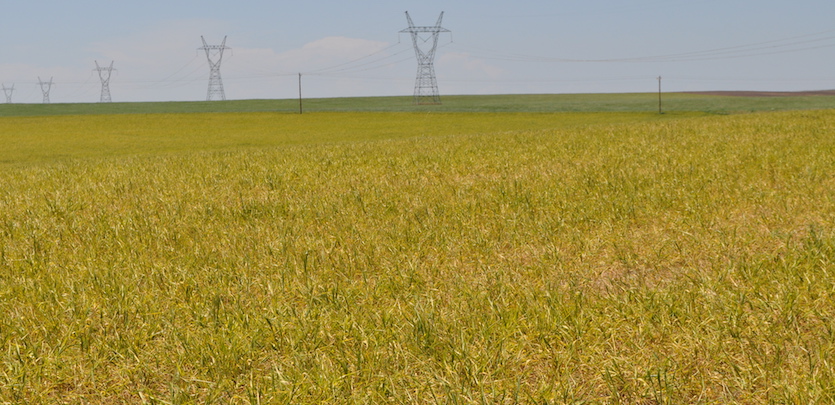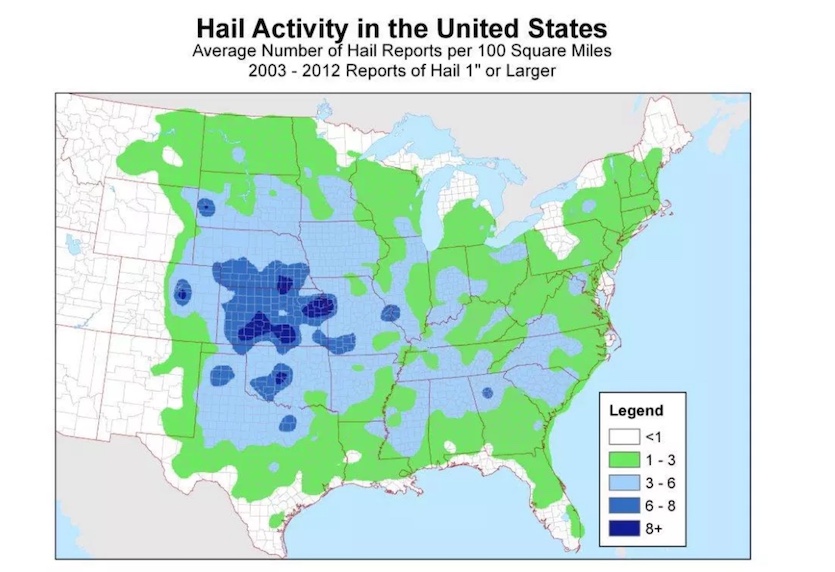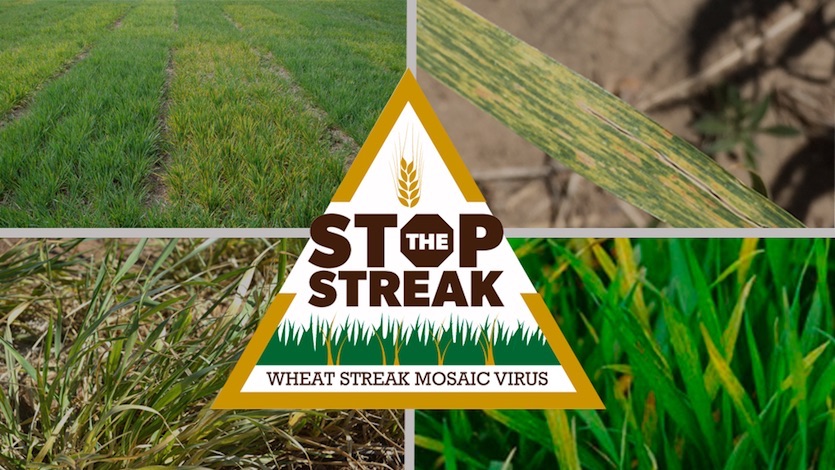| Above: Despite its tiny size—only 0.008 inches long—the wheat curl mite can inflict many tens of millions of dollars in damage each year. Image credit: USDA-ARS, Electron & Confocal Microscopy Unit and Systematic Entomology Laboratory. |
If you’re in a car that’s getting pummeled by giant hail, you don’t soon forget the deafening thuds and the sense of assault. A major hailstorm can inflict $1 billion or more in car and roof damage, as was the case in the Denver area on May 8, 2017, and in the Dallas–Fort Worth area several times over the past decade. Likewise, when hail pounds a wheat field, the immediate damage can be widespread and costly. But there’s an accessory to the hail that’s little known outside agricultural circles—one that can sock farmers with major trouble long after the storm has passed.
This partner is a minuscule creature, a mere 0.008 inches (0.2 millimeters) long, called the wheat curl mite. It’s an unassuming critter that takes advantage of the conditions in a hail-ravaged wheat field to bide its time until the next year’s crop is planted. Then the mite goes to work by distributing the destructive wheat streak mosaic virus, which stunts and discolors the plants.
Identified more than a century ago, wheat streak mosaic virus is a worldwide problem. In Kansas alone, the virus cost farmers at least $76 million in 2017. “The wheat streak mosaic virus turned a great crop into an average crop,” Kansas wheat farmer Vance Ehmke told Reuters last fall. On average, the virus knocks 2% off the annual economic value of wheat across the central Great Plains, according to the Kansas Department of Agriculture. In some years, U.S. wheat streak mosaic damage may exceed the direct damage wreaked by hail on all U.S. crops, which averaged $124 million per year for the period 2012–2016 according to the Insurance Information Institute.
 |
| Figure 1. This wheat field in western Nebraska experienced severe damage from wheat streak virus, as shown by the mottled yellow color and disfigured leaves. Image credit: Courtesy Gary Hein, University of Nebraska–Lincoln. |
A two-year double whammy from hail
Much like tornado destruction, hail damage tends to occur in narrow swaths that can be as large as several miles wide by tens of miles long. The most crop-destructive hailstones aren’t always the biggest: a heavy downpour of marble- to golf-ball-sized hail, blown across a wheat field by high winds, can be more damaging than a thinner deposit of giant hailstones.
The seasonal timing of wheat crops over the U.S. Great Plains—where the vast bulk of the nation’s wheat is grown—gives the wheat curl mite a big boost. Some 80% of U.S. wheat production is winter wheat. Planted in the fall, it springs to life in the late winter and spring (showing off its lush carpet of green long ahead of trees and grasses). Winter wheat is typically ready for harvest by late spring or early summer, just when massive hailstorms are most likely to be roaming the Plains.
 |
| Figure 2. Kansas—the nation's leading wheat-growing state—is also the most likely state to experience severe hail (at least quarter size, or one inch in diameter). Image credit: Insurance Institute for Business and Home Safety. |
When a wheat field is decimated by hail, especially within about three weeks of harvest, the seeds on the ruined stalks often give rise to shoots of “volunteer” wheat that spring up in the summer. Although volunteer wheat has no major economic value, it does provide what’s known as a “green bridge”—a botanic foothold on which the wheat curl mite can feed and position itself during the heat of summer (when the field would otherwise be harvested and barren). From there, it spreads the virus into the next winter’s crop during autumn.
Once established, wheat curl mites tend to disperse in the direction of prevailing winds, sometimes traveling a few miles away from a hail swath during their life cycle and thus extending the range of potential crop damage. This damage typically doesn’t become evident till the next spring, almost a year after direct hail damage.
 |
| Figure 3. Volunteer wheat growing out of a hail-damaged wheat head showing virus symptoms (yellowing) and mite symptoms (tight curling of leaves). Image credit: Courtesy Gary Hein, University of Nebraska–Lincoln. |
Hailstorms in 2016 led to one of the nation’s worst years in decades for wheat streak mosaic virus in 2017, according to entomologist Gary Hein, who directs the doctoral program in plant health at the University of Nebraska–Lincoln. “Severe problems developed across Kansas and western Nebraska,” Hein said in an email. “One area north of Chappell, NE where we did a fair bit of observation was about 3 miles wide by close to 10 miles long where nearly all winter wheat was lost to the virus. This area was directly in the path of a serious 2016 hailstorm that wiped out most of the wheat in the area shortly before harvest.”
It’s quite possible that long-term climate change in the form of warmer autumns is helping the wheat curl mite to thrive during the crucial fall period, according to Hein. “The very mild fall conditions in 2016 maximized the damage potential from the hail events that had occurred earlier,” said Hein in an email. “There is absolutely no question in my mind that the trend to milder fall conditions plays directly into much higher risk from this disease complex. However, finding and collecting adequate data to best document this is challenging.”
No pesticide is currently available to deal with the wheat curl mite, but several genes resistant to wheat streak mosaic virus have been identified. Farmers can greatly reduce the spread of wheat streak mosaic virus by getting rid of volunteer wheat that emerges prior to harvest in the midst of a hail-damaged field. The state of Kansas has launched a “Stop the Streak” program, urging farmers to act as soon as possible in the aftermath of a hailstorm.
 |
| Figure 4. A promotional image for the “Stop the Streak” program, kicked off by the state of Kansas in 2017. |



